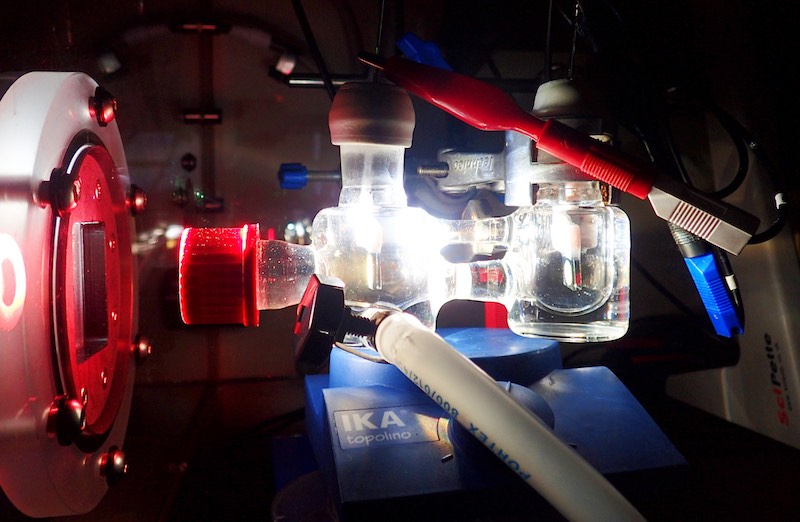Scientists at the University of Cambridge have developed a new photosynthesis method that combines biological and synthetic components to produce hydrogen using sunlight as the only source of energy.
“Natural photosynthesis has evolved to store solar energy and to reduce the greenhouse gas carbon dioxide into sugars, but this process is not very energy efficient, approximately 1-2% for most crop plants,” Katarzyna Sokół, a PhD Student at the University of Cambridge who took part in the research, told me.
Artificial photosynthesis methods seeking to unlock the full potential of the process have been developed in the past, but they often rely on expensive and toxic catalysts to transform the energy absorbed into fuel. Thus, they are currently not viable to be used at industrial scale.
Sokół and her colleagues use two enzymes as biological catalysts in their semi-artificial photosynthesis method. Hydrogenase, an enzyme present in algae, is used to catalyze the production of hydrogen molecules, whereas the photosystem II is used to catalyze the production of oxygen molecules.
“Photosystem II is the first photosynthetic enzyme in natural photosynthesis and the only enzyme capable of catalyzing water oxidation into oxygen,” explained Sokół. “Wiring photosystem II directly to hydrogenase re-creates the photosynthetic pathway.”

These enzymes are combined with synthetic dyes, polymers, and electrode materials to absorb light and transfer it between the different elements of the semi-artificial photosynthesis system. Combined, they are able to absorb more solar light than plants can using natural photosynthesis.
“Compared to the natural photosynthesis, this new system makes more efficient use of the solar light spectrum, delivers high conversion yields, and bypasses several competing metabolic pathways, which is not achievable using synthetic biology or materials science alone,” said Sokół.
Although the new system is a promising step forward in the production of fully renewable energy, Sokół points out that the research is still in its early stages.
“The system is a proof-of-concept device and a model system to construct semi-artificial photosynthesis devices, as it is still too fragile to envision real-world applications. However, this platform allows us to replace components and extend the utility from solar water splitting to solar-driven carbon dioxide conversion and replace fragile enzymes by whole cell catalysts in future development.”
Images via Shutterstock; Katarzyna Sokół





